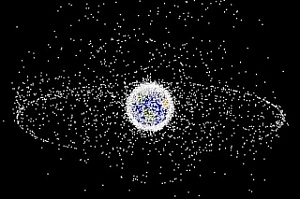Evgeniya Blinkova, a postgraduate student and researcher at the Laboratory of Computer Modeling and Machine Analysis of Astronomical Data of the TSU Faculty of Physics, studies the dynamics of an array of uncontrolled objects moving in near-earth space. The position of such objects is important to know when launching any new spacecraft into space.
All objects that have already completed their term are called uncontrolled. These are predominantly old satellites, but there are also large fragments of flying devices. All this is space debris. It is most often found in the LEO and LEO-MEO regions of near-Earth space - from the Earth's atmosphere to the orbits of the GLONASS and GPS navigation systems.
Objects in this region of outer space have very complex dynamics: they are subject to the action of the Earth's gravitational field, the attraction of the moon and the sun, and the influence of light pressure and various resonances associated with both the Earth's rotation speed and the precession frequencies of the Earth's and moon's orbits. TSU scientists have already performed theoretical studies of the dynamics. Now the knowledge will be applied to real objects - Evgenia Blinkova will determine how they move and redistribute in space over time.
- There is a problem: uncontrolled objects can damage, for example, working satellites. Spent objects must either be somehow removed from orbit, or it must be known for sure that they will not interfere with others. And for this, knowing the long-term evolution of their orbits is necessary. Let's say an uncontrolled object can be in space for ten years without damaging other objects. But over one hundred years or more, its orbit under the influence of resonances can change significantly. Therefore, we decided to tackle this topic, - says Evgenia Blinkova.
- Objects located in near-earth space can be promptly removed from orbit and either dropped into the atmospheric region or sent into a new orbit where it will not interfere. But at this stage, everyone feels regretful about the fuel, so they are moving until the last of it, and the object becomes uncontrolled, - Tatyana Bordovitsyna, professor of the Department of Astronomy and Space Geodesy of the Faculty of Physics, explains the relevance of the topic of her graduate student. - There are more than 13,400 objects in launch orbits today, of which only 6% are functioning, and the rest are space debris. Observing the movement of such objects and analyzing their orbital evolution is important for present and future experiments. So, for example, when launching a new spacecraft, it is necessary to know which objects it may collide with.

